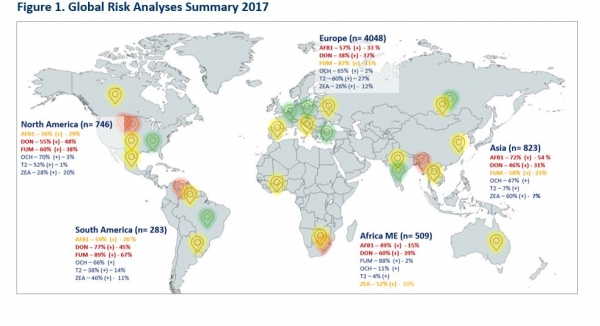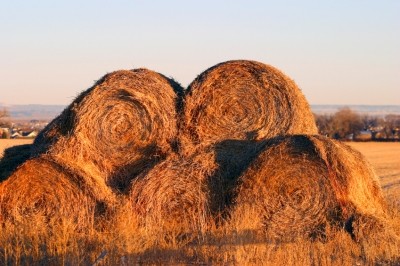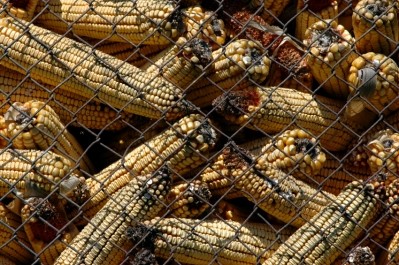Greater contamination of feed grains by aflatoxin and fumonisin this year

The animal nutrition division of Nutreco recently released the findings of its 2017 harvest crop condition data evaluation work. Its analysis shows that, worldwide, 68% of crop samples tested positive for the presence of mycotoxins in 2017; up from 62% in 2016.
Like 2016, the mycotoxin experts found the most prevalent mycotoxins in 2017 crop samples continue to be aflatoxins, fumonisins (FUM), deoxynivalenol (DON) and zearalenone (ZEA).
They said prevalence of some mycotoxins has increased over 2016. “For example, aflatoxins were present in 91% of crop samples tested in 2017, compared to 81% of 2016 crop samples. The presence of FUM in 2017 samples soared to 87%, compared to 44% in 2016. An opposite effect was seen with regards to ZEA levels, with 46% of 2017 samples testing positive for the mycotoxin, compared to 56% of 2016 samples.”
Seasonality factor
The effects of seasonality also influence the prevalence of mycotoxins. “Paying attention to seasonal shifts can help producers prepare a risk management strategy to address surges in toxicity levels that accompany changing seasons,” said the analysts.
Their evaluation of aflatoxin distribution levels among 20,000 samples, collected between 2015 and 2017, shows that levels of mycotoxins tend to spike between September and March. “Feedstocks held in storage and carried over from 2016 are a contributing factor to higher levels of mycotoxins in crops,” said the Trouw team.
Regional picture
Looking at the results region by region, in Asia they said aflatoxins were the most prevalent mycotoxin among crops sampled in the analyses, with 72% of samples testing positive.
DON (46%), FUM (58%) and ZEA (60%) were also quite prevalent in Asia while ZEA was found at relatively lower levels then DON and FUM.
Dry weather conditions in China followed by high levels of precipitation during the silking stage of corn growth point to increased levels of risk for mycotoxins such as FUM, reported the team.
North America
The northern regions of the US and Canada affected by drought conditions earlier in the year experienced a delay in harvesting. “These regions account for the 10% of grains in the region deemed to be in poor or very poor condition. Drought conditions may place additional stress on plants resulting in reduced grain fill and allowing molds such as aflatoxins to proliferate.”
Drought in Canada also resulted in poor conditions for the 2017 spring wheat harvest, while 2017 weather conditions were positive for soya crops across all main producing regions of North America, said the Trouw analysts.
Europe
The dry weather conditions in the western, southern, and eastern parts of Europe, particularly in the high-producing region of the Ukraine, are likely to compromise 2017 maize/corn quality, they said.
“As the winter wheat crop is planted, high levels of precipitation in northern parts of Europe have interfered with the sowing of this crop. Effects of these autumn rains will not be seen until the 2018 winter wheat crop is harvested.”
The team said that among the 3,038 European crop samples analyzed in 2017, aflatoxin (AFB1), DON, (FUM) and trichothecene (T2) toxins were the most prevalent.
“The incidence of samples at levels which can compromise animal performance in the most sensitive species were dependent on the inclusion of specific grains. The most significant being DON (37%) and Fumonisins (43%). Dry conditions in western and southern parts of Europe and Ukraine may lead to higher prevalence and levels of aflatoxins in 2018 corn.”
South America
In South America, aflatoxin, DON, FUM and T-2 were the most prevalent mycotoxins found in the 2017 analyses, said the mycotoxin experts. Some 77% of samples from that region tested positive for DON, with 45% of these samples at levels above the threshold of performance impairment for pigs, said the Trouw team.
Africa
While 72% of samples in Africa tested positive for zearalenone, just 10% exceeded limits related to reproductive performance in pigs, they added. Aflatoxins DON and FUM were identified as the most prevalent mycotoxins in that geography.
Mycotoxins and impact on animal performance
Within the swine category, the primary impact of DON and Aflatoxins is decreased feed intake and compromised immune function. Elevated levels of T2 above thresholds present a threat for reproductive failure in swine, while ZEA can decrease weight gain through co-contamination with other feed ingredients.
In poultry production, elevated levels of DON, T-2 and FUM may contribute to increased FCR as well as impaired gut health and immune function. The presence of DON, FUM and ZEA in layers can also compromise eggshell quality.
For dairy cows, DON and T-2 can negatively affect feed intake. DON may also affect rumen function. T-2 in conjunction with DON can present negative consequences for the cow’s immune function, and ZEA may contribute to reproductive failure.
Across species, efforts to detect subtle changes at the farm level can alert producers to the negative impact of mycotoxins and provide opportunities to introduce intervention strategies earlier.








